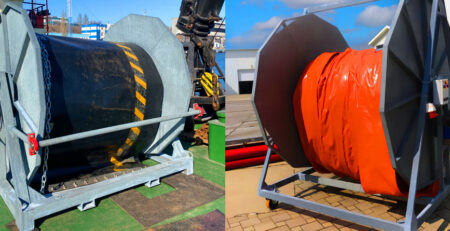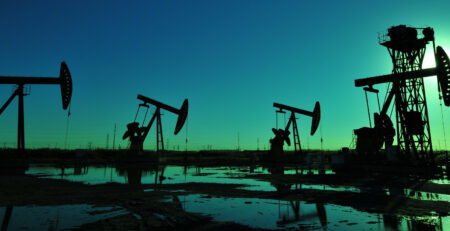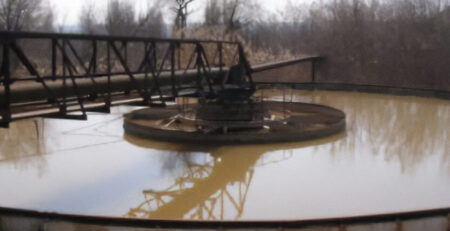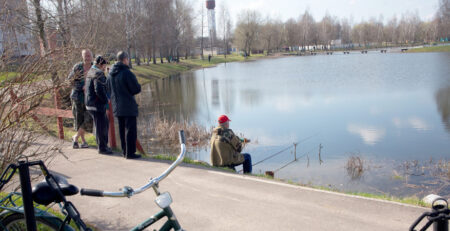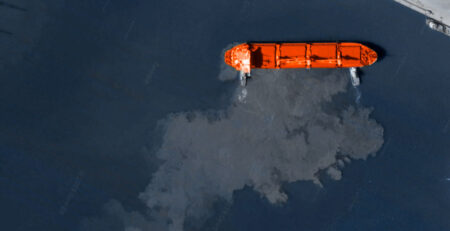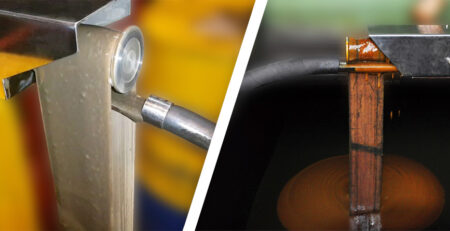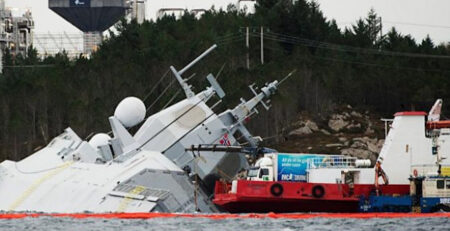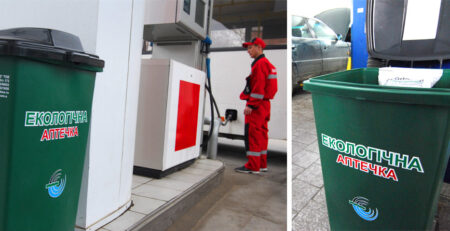Sorbents and biopreparations for elimination of sea oil pollution
Soloviev V.I.
Gubanov V.V.
Kozhanova G.A., Gudzenko T.V.
Oil pollution is one of the most massive and dangerous in its consequences manifestations of anthropogenic impact on natural ecosystems. The waters of rivers, lakes and the World Ocean annually, for various reasons, receive from 2 to 10 million tons of oil. Space imagery has recorded that almost 30% of the ocean surface is covered with oil film [1].
1] The Ukrainian part of the Black Sea shelf and, first of all, its north-western region, which is under the strong influence of the Danube, Dniester, Dnieper and Southern Bug drains, is also subject to oil pollution to a significant extent. Large ports and transshipment complexes, as well as insufficiently treated industrial, domestic and storm water of coastal cities are also significant sources of oil pollution of the marine environment [4].
The diverse and large-scale anthropogenic impact on the ecosystems of the north-western Black Sea (intensive shipping, urbanization and industrialization of coastal areas, creation of new large transshipment complexes, development of oil and gas reserves on the shelf, sand refugia, etc.), against the background of eutrophication and periodic hypoxia, have led to a decrease in the self-purifying capacity of marine ecosystems and their transformation in an undesirable direction [5]. Further intensification of anthropogenic pressures on the ecosystems of the north-western part of the Black Sea, including those related to oil and oil products pollution (construction of the oil terminal in Yuzhny, oil production on the shelf, increased intensity of shipping), without improvement of the complex of environmental protection measures will lead to further degradation of marine biocenoses and reduction of recreational potential of the Black Sea basin.
Mechanical methods are the most widespread for elimination of oil pollution of water. Spills of oil products are immediately localized by booms. To collect the bulk of spilled oil products, oil waste collectors (OWC) are used. As a result of their application 80-90% of spilled oil products are collected. However, these vessels cannot operate in water depths of less than 2 meters. Small-sized portable oil skimmers are used to collect oil in shallow waters, but Ukrainian ports still do not have such equipment. In addition, it should be noted that if mechanical methods partially solve the problem of collecting the bulk of oil in large-scale accidents for its reuse, their role in the environmental aspect is not so significant. They are ineffective in the elimination of oil that has spread a thin (rainbow) film on the water surface or has passed into an emulsified state [6].
For liquidation of thin rainbow films and oil accumulation in places inaccessible for NMS or skimmers, methods of “second echelon” are used – physical-chemical and biological. These methods are based on the processes of oil film destruction with the help of SPAW (dispersing), sorption of film and emulsified oil by natural and synthetic sorbents, destruction of oil hydrocarbons by oil-oxidizing microorganisms.
However, each of the above methods has a number of disadvantages. Most dispersants have toxic properties and their use has a number of restrictions or is prohibited in some countries [7]. Dispersants are not used in Ukrainian ports.
The Rules for cleaning of polluted water areas of ports provide for the use of sorbents, the normative stock of which should be available in all ports [8]. Among the sorbents recommended by the Rules, woodworking and agricultural wastes – husked corn cobs, straw, sawdust, as well as crushed peat – are listed. The use of these sorbents in ports has not found wide application due to low oil capacity (in this connection there is a necessity to use large volumes), their lack of hydrophobicity, difficulty in creation and storage of necessary stocks, lack of mechanisms for their application.
Of industrially produced sorbents, which have high oil capacity and hydrophobicity, the most effective are sorbents from polymers – from fine powders, granules, to mats, fabrics and sorbing bons. The disadvantages of these preparations include poor absorbability of thin oil films, carcinogenicity of fine powders (according to the specialists of “Mannesman-Italy” company), difficulties in utilization by incineration [1]. There is no information on the use of such preparations in Ukrainian ports.
From the point of view of cheapness of raw materials and ecological purity the most attractive are sorbents based on organic natural substances – peat, sawdust, agricultural waste (bran, straw, rice husks, etc.). The largest number of sorbents of this category is produced on the basis of peat: “Pit-sorb” (Canada), “Fin-sorb” (UK), “Elkosorb” (Finland), “Mukat-4”, “Lesorb” (Belarus), “Sorboyl” (Russia). Of the oil sorbents developed in Ukraine, only “Pearl” – expanded perlite – is produced in commercial quantities.
All these sorbents have high oil capacity (from 4 to 10 g/g) and hydrophobicity. Their application for sea surface cleaning provides obtaining of primary ecological effect – breaking of continuous film pollution, sorption of emulsified oils. Application of foreign preparations of this group in Ukrainian ports is restrained, in our opinion, by their high cost for Ukrainian consumers (8-12 US dollars per 1 kg).
The common disadvantage of the above mentioned sorbents is the necessity of their collection, which is very labor-intensive, requires special means and is practically unfeasible in case of significant waves. The practice of oil spill responders using sorbents shows that in most cases it is not possible to collect more than 25% of the sorbent applied to the water surface. The points complicating the use of sorbents include the lack of technology and equipment for their utilization by incineration.
In recent years, attempts have been made abroad to create new generation sorbents, which stimulate natural self-cleaning processes of biodegradation of sorbed petroleum products. An example of such preparations is a sorbent created on the basis of layered aluminosilicate with the addition of potassium, nitrogen and phosphorus salts – “C-verad”.
In natural water bodies microorganisms are the immune system of natural biocenoses, providing resistance to anthropogenic pollution. In the aspect of the above, the development of effective microbiological technologies for stimulation of natural self-purifying processes, methods of deep purification and detoxification of oil-containing wastewater, preparations for destruction of oil hydrocarbons polluting natural water bodies is a priority.
Microbial destruction of oil contaminants is one of the most important processes contributing to their elimination from aquatic ecosystems. The special biochemical organization of the microbial cell has provided it with polyfunctional enzymatic activity. Thanks to it microorganisms are able to utilize oil hydrocarbons in the process of energy and constructive metabolism and destroy them. Study of these processes and purposeful work on selection of strains of microorganisms destructors of oil hydrocarbons allowed to develop a number of preparations on their basis. Only for the last 10 years in the CIS countries more than two dozens of biopreparations based on oil-oxidizing microorganisms have been created, while the proposed methods of stimulation of natural self-cleaning processes did not go beyond experimental treatments.
In Ukraine, the best known preparations are: “Desna” (developed by the Ukrainian Research Center for Oil and Gas Ecology, Kiev), Consortium of Microorganisms (Institute of High Technologies, Kiev), “Devoroil”, which is produced under a Russian license by JSC “Ferment” (Ladyzhin) and recently recommended by the Ministry of Ecology “Simbinal” (developed by the Institute of Botany of the National Academy of Sciences of Ukraine). (developed by the Institute of Botany of the National Academy of Sciences of Ukraine). Putidoyl, Oleovorin, Devoroyl, Valentis, Naftox, and Micromycet are widely used in Russia, and Rodobel and Rodobel-T are widely used in Belarus. These preparations are lyophilized cultures or paste, on the basis of which working solutions for treatment of oil pollution are prepared. However, application of such preparations is not rational in conditions of port water areas and open sea due to impossibility to create necessary effective concentrations of bacteria-destructors of oil hydrocarbons because of large volumes of water, washing off of cultures from oil pollution during waves and precipitation. In addition, the above bacterial preparations cannot be used for liquidation of emergency oil spills in the immediate response mode, as their preparation requires at least 2-3 days. Application of most of the above bacterial preparations at sea (water body of the second category of water use in accordance with SanPiN 4630-88. 1.01.89) is doubtful due to medical and sanitary considerations [9].
The optimal solution to the problem of sea water purification is the development of preparations with the properties of sorbents and preparations based on microbes destructors of oil hydrocarbons.
Such preparations include the first domestic biopreparation of new generation “Econadine”, which is a bacterial preparation with high sorption and destructive activity against a wide range of oil hydrocarbons.
“Econadine” (TU U 30171732-001-2000 Bacterial preparation “Econadine”, registration in Gosstandart 11.09.2000, № 095/004466) is a brown powder, dispersed, or with fibrous inclusions, buoyant, hydrophobic. The preparation is based on bacteria super destructors of oil hydrocarbons, immobilized by special technology on organic substrate – peat. Ecologically clean, non-toxic, odorless. Sorption capacity from 1:5 to 1:10 depending on the type of oil product and modification of the preparation. Unlike other sorbents, the phenomenon of oil products desorption is practically absent.
The preparation “Econadin” is protected by patents [10-12], authorized by the Ministry of Health of Ukraine, recommended by the Ministry of Ukraine for Emergency Situations and Protection of Population from the Consequences of the Chernobyl Disaster, Ministry of Ecology and Natural Resources of Ukraine.
Primary sorption of oil hydrocarbons by the preparation is accompanied by biocatalytic transformation with subsequent destruction of oil pollution under natural conditions. Natural oil-oxidizing microflora of natural environment is not suppressed, but activated, besides, sanitary-hygienic indicators of water are improved due to antagonistic effect on pathogenic microorganisms.
Biotechnological method with the use of the preparation “Econadine” is applied in a single integrated solution of oil spill liquidation after collection of the main pollution by mechanical means. The use of biotechnology with “Econadine” preparation in the arsenal of means for rapid response in the liquidation of oil pollution of water and coastal zone allows:
– block pollution in the shortest possible time and prevent its spread;
– eliminate pollution with minimal environmental damage;
– provide further prolonged action to restore natural biocenoses with the involvement and stimulation of self-purifying mechanisms.
The product is designed:
for quick elimination of oil, oil products, gas condensate spills on the water surface (in the water areas of ports and shipyards, open sea, estuaries, especially when eliminating pollution in places inaccessible to mechanical means of oil products collection – in blind pockets of berths and under-berth clearances, on floating areas, marshes, etc.);
for cleaning of the coastal strip polluted with oil products as a result of accidental spills on water, including in recreational areas (beaches);
for deep treatment of oily wastewater from oil transshipment complexes, ballast and bilge water from ships.
At present, all major ports of Ukraine have created an irreducible stock of the preparation “Econadine”, which is used not only for cleaning water areas from oil pollution, but also on shore facilities (piers, gas stations, boiler houses, garages, etc.) [13, 14].
List of references
- Аренс В.Ж. Гидрофобные органоминеральные сорбенты для ликвидации разливов нефти. Современные методы очистки территорий от нефтяных загрязнений. Утилизация отходов. Автоматический контроль. Приборы и оборудование /Материалы научно-практической конференции. Москва, 21-22 ноября 1995г. –– М.: АОЗТ «Олита», 1995.- С 3-6.
- Гидрохимические условия и состояние загрязнения вод Днепр-Бугского лимана / Т.Л. Монина, Б.Ф. Андрющенко, А.И. Рябинин, А.Г. Сотникова /Исследование шельфовой зоны Азово-Черноморского бассейна. Сб. научн тр. МГИ НАН Украины.- 1995.- С. 54-55.
- Специфические черты гидрологического и гидрохимического режимов и уровня загрязнения прибрежной зоны моря в районе Одессы / С.А.Доценко, Н.И.Рясинцева, И.П.Савин, С.А. Саркисова /Исследование шельфовой зоны Азово-Черноморского бассейна. Сб. научн. тр.МГИ НАН Украины.- 1995.- С. 31-34.
- Задачи госинспекции охраны Черного моря в решении экологических проблем Черного моря / С.К.Долинский, В.П.Савустин, Е.Г. Патлатюк, В.И. Чаусов / Экологические проблемы Черного моря. Сб. научн. статей ОЦНТЭИ. – Одесса: ОЦНТИ, 1999.- С. 3-11.
- Миронов О.Г. Взаимодействие морских организмов с нефтяными загрязнениями.-Л.: Гидрометиздат, 1985.- 185 с.
- Нунупаров С.М. Предотвращение загрязнения моря нефтью. — М.: Транспорт. – 166 с.
- Себастьян А.Герлах. Загрязнение морей.- Л.: Гидрометеоиздат, 1985.- 262 с.
- Правила ведения работ по очистке загрязнения акваторий портов. Р.Д. 31.04.01-90.- М.- 1991.- 50 с.
- Соловьев В.И., Пушкина В.А., Кожанова Г.А., ГудзенкоТ.В. Меди-цинские аспекты и санитарно-гигиеническая оценка бактериальных препаратов, применяемых для борьбы с нефтяным загрязнением водоемов / Вода и здоровье –2001. Сб. научн. статей.-Одесса: ОЦНТЭИ, 2001.- С.195-200.
- Способ получения бактериального препарата для очистки водной среды от загрязнений нефтепродуктами. Патент РФ 2033975. Кожанова Г.А., 1991.
- Способ очистки воды от нефтяного загрязнения. Патент РФ 2031860. Кожанова Г.А., 1991.
- Спосіб одежання бактеріального препарату для сорбції та деструкції органічних речовин. Кожанова Г.А. Рішення Укрпатента від 15.10.2001 р. по заяві №97094657 від 17.09.1997 р.
- Павлюк Н.П. Экологические аспекты деятельности Одесского морского торгового порта //Причерноморский экологический бюллетень №1.- 2001.- С 129-130.
- Иванов В.Г. Современный порт – современное экологическое мышление //Причерноморский экологический бюллетень №1.- 2001.- С 131-134.


